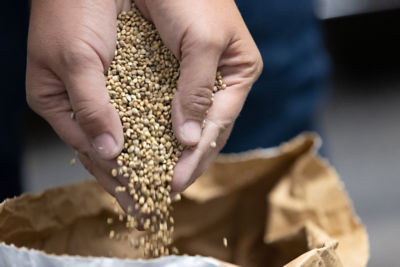Causal Agent
Cladosporium cucumerinum
Distribution
Worldwide
Symptoms
Scab is most common on cucumber, but can also affect cantaloupe, pumpkin and squash. All exposed portions of the plant and fruit can be infected. Leaf symptoms appear as circular to angular, brownish, water-soaked spots with yellow margins. Infected plants may have shortened internodes which can give the appearance of virus infection. A gray to olive-colored sporulation can develop on infected tissue. Infection appears on young fruit as water-soaked spots which develop into crater-like depressions as the fruit mature. The crater-like depressions develop an irregular, scab-like appearance as fruit age. Fruit lesions are commonly shallow and spongy. Often a gummy brown substance appears on the scabby surface. Under humid conditions, a mass of fungal spores (conidia) may develop on fruit.
 Cucumber fruit infection.
Cucumber fruit infection.
Conditions for Development
Cladosporium cucumerinum survives in infected plant material. Conidia can bedispersed by wind, insects, farming equipment, and workers. The disease developsrapidly under cool [21–24ºC (70–75ºF)], moist conditions. Higher temperatures inhibit disease development.
Control
Grow scab-resistant cucumber varieties. Implement a preventative fungicide spray program. Control volunteers and cucurbit weed hosts, which can serve as sources of inoculum.



